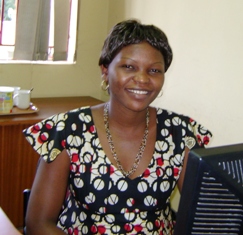
{jcomments off}

{jcomments off}
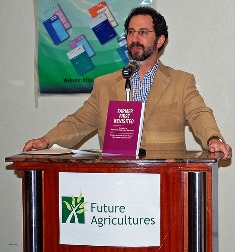 John Thompson has worked on power, policy and sustainability issues in food and agriculture, water resource management and rural development for nearly 25 years, in both developing and industrialised countries.
John Thompson has worked on power, policy and sustainability issues in food and agriculture, water resource management and rural development for nearly 25 years, in both developing and industrialised countries.
He joined IDS in October 2006 as a Research Fellow in the Knowledge, Technology and Society Team. Previously, he served as Director of the Sustainable Agriculture and Rural Livelihoods Programme of the International Institute for Environment and Development (IIED), London, and Director of Research and Development of Just Food, New York City. He has authored more than 60 peer-reviewed articles, technical papers and reports, and is author and co-editor of several books. In addition, he has sat on several international task forces, advisory panels and editorial boards, and has worked as a Research Associate at the National Environment Secretariat, Kenya, a Research Fellow at Clark and Harvard Universities, USA, and a Fellow at the International Institute for Applied Systems Analysis, Austria. {jcomments off}
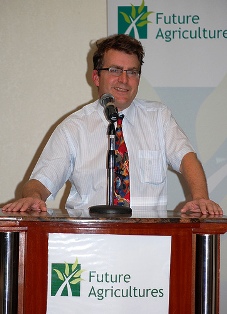 Ian Scoones is co-director of the ESRC STEPS Centre at the University of Sussex and joint convenor of the IDS-hosted Future Agricultures Consortium. He is an agricultural ecologist by original training whose interdisciplinary research links the natural and social sciences and focuses on the relationships between science and technology, local knowledge and livelihoods and the politics of policy processes in the context of international agricultural, environment and development issues.
Ian Scoones is co-director of the ESRC STEPS Centre at the University of Sussex and joint convenor of the IDS-hosted Future Agricultures Consortium. He is an agricultural ecologist by original training whose interdisciplinary research links the natural and social sciences and focuses on the relationships between science and technology, local knowledge and livelihoods and the politics of policy processes in the context of international agricultural, environment and development issues.
A social and institutional perspective is at the centre of his work, which explores the linkages between local knowledges and practices and the processes of scientific enquiry, development policy-making and field-level implementation. Over the past twenty-five years, he has worked on pastoralism and rangeland management, soil and water conservation, biodiversity and conservation, as well as dryland agricultural systems, largely in eastern and southern Africa. A central theme has been a focus on citizen engagement in pro-poor research and innovation systems. Most recently he has been working on the governance of agricultural biotechnology in India and veterinary/animal health science and policy in Africa, including projects on livestock marketing and foot-and-mouth disease in southern Africa and the international responses to avian influenza.
{jcomments off}
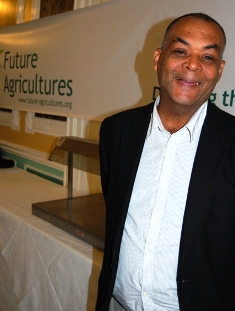 Kojo Amanor is an Associate Professor at the Institute of African Studies, University of Ghana, Legon. He joined the Institute in 1993. From 1988 to 1990 he was Research Associate at the Overseas Development Institute (ODI), London – Pastoral Development Network and Research and Extension Network.
Kojo Amanor is an Associate Professor at the Institute of African Studies, University of Ghana, Legon. He joined the Institute in 1993. From 1988 to 1990 he was Research Associate at the Overseas Development Institute (ODI), London – Pastoral Development Network and Research and Extension Network.
In 1989 Kojo was awarded a PhD from the Department of Anthropology, University College London, London University and gained a BA Hons at the School of Oriental & African Studies in 1979 in African History and Social Anthropology. An anthropologist, Dr. Amanor has written extensively on land and land-use issues in West Africa. His publications include Land, Labour and the Family in Southern Ghana: A Critique of Land Policy Under Neo-liberalisation.
{jcomments off}
 Rachel Sabates-Wheeler is a Development Economist with extensive experience in rural development, institutional analysis and social protection, including 2.5 years leading research on Land Policy in Albania. Since 2001, she has been a Research Fellow at the Institute of Development Studies (IDS) at the University of Sussex and a Director of the Centre for Social Protection since 2006.
Rachel Sabates-Wheeler is a Development Economist with extensive experience in rural development, institutional analysis and social protection, including 2.5 years leading research on Land Policy in Albania. Since 2001, she has been a Research Fellow at the Institute of Development Studies (IDS) at the University of Sussex and a Director of the Centre for Social Protection since 2006.
Prior to IDS Rachel’s geographic research focus was primarily in Eastern Europe and Central Asia. Since joining IDS she has worked with poverty analysis work relating to PRSPs, social protection and migration in over 7 African countries At IDS, Rachel was the Director of the MPhil in Development Studies between 2003 and 2007. She has published on issues of rural institutions in post-soviet transitions, law and development, social protection in Africa, migration and poverty, and has worked for numerous international agencies, including DFID, EC, SIDA, UNICEF, WFP, FAO, ILO, the Land Tenure Center and the World Bank. Rachel is a Senior Researcher with the Migration, Globalization and Poverty Research Centre, Sussex, leading research on social protection and migration as well as poverty-migration linkages. She is currently involved in a number of studies that explore understandings of risk and vulnerability both conceptually and empirically and is writing a book on migration and social protection.
{jcomments off}
 Stephen Devereux is a development economist with 20 years experience working predominantly on food security, rural livelihoods, social protection and poverty reduction issues. His research experience has mainly been in Africa, especially Ethiopia, Ghana, Malawi and Namibia.
Stephen Devereux is a development economist with 20 years experience working predominantly on food security, rural livelihoods, social protection and poverty reduction issues. His research experience has mainly been in Africa, especially Ethiopia, Ghana, Malawi and Namibia.
He has provided policy advice to the Government of Botswana, Ethiopia, Malawi, Namibia, Uganda and the UK. His books include ‘Fieldwork in Developing Countries’, ‘Theories of Famine’, and ‘Food Security in Sub-Saharan Africa’. He has been a Research Fellow at the Institute of Development Studies (IDS), University of Sussex since 1996. His current projects include: ALINe; Swaziland’s Food and Cash Transfers project; Social Protection Approaches for Climate Change; Malawi Social Protection Framework;Making Cash Count; Lesotho’s Cash and Food Transfers project; Kenya Hunger Safety Net programme; Food Supply Crisis and Food Security in Malawi; FACT Malawi; Ethiopia Productive Safety Net Programme.
{jcomments off}
 Eva Ludi is a geographer with a diverse portfolio. Currently she is a member of the Protected Livelihoods and Agricultural Growth (PLAG) Programme and the Water Policy Programme (WPP) at the Overseas Development Institute (ODI).
Eva Ludi is a geographer with a diverse portfolio. Currently she is a member of the Protected Livelihoods and Agricultural Growth (PLAG) Programme and the Water Policy Programme (WPP) at the Overseas Development Institute (ODI).
She has over ten years of experience in research and policy with a special focus on Ethiopia and other East African countries particularly related to sustainable rural development and sustainable natural resource management, having previously worked at the Centre for Development and Environment, Bern University.
Some of her current workstreams include: Research on livelihoods of coffee producers in Ethiopia, Kenya and Tanzania producing for the mainstream and the speciality market; A Long-term Action Research Study on water and growth focusing on how investments in water can contribute to poverty reduction and more resilient livelihoods; Contributions to a number of ongoing activities on Climate Change adaptation.
{jcomments off}
 Jennifer Leavy is an Agricultural Economist working as a Research Officer at the Institute of Development Studies (IDS), University of Sussex. She has research and consultancy experience in sub-Saharan Africa, South and South-East Asia.
Jennifer Leavy is an Agricultural Economist working as a Research Officer at the Institute of Development Studies (IDS), University of Sussex. She has research and consultancy experience in sub-Saharan Africa, South and South-East Asia.
Currently she is working on Evaluating adaptation to climate change from a development perspective and Future Agricultures. She has a keen interest in institutions, poverty and livelihoods; work and labour exchange; agricultural commercialisation; social network analysis; combining quantitative, qualitative and participatory methods in research and analysis.
{jcomments off}
 Sally Smith is a Research Officer at the Institute of Development Studies, University of Sussex working on international trade, corporate social responsibility, poverty and rural development.
Sally Smith is a Research Officer at the Institute of Development Studies, University of Sussex working on international trade, corporate social responsibility, poverty and rural development.
She has an MA in International Rural Development from University of East Anglia and a history of research and advisory services to a number of NGOs and private businesses, as well as independently funded academic research. She has extensive field experience using qualitative and participatory methodologies in various agricultural and industrial sectors in Africa, Asia and Latin America. She has specialist knowledge on fair trade and ethical trade in global value chains; gender issues in agriculture and manufacturing; impact assessment for organisational learning and change.
{jcomments off}
 Steve Wiggins is a Research Fellow and Programme Leader at the Overseas Development Institute (ODI). He has been studying and working on agricultural and rural development in Africa and Latin America since 1972.
Steve Wiggins is a Research Fellow and Programme Leader at the Overseas Development Institute (ODI). He has been studying and working on agricultural and rural development in Africa and Latin America since 1972.
He holds a MA in Agricultural Economics from University of Manchester, and MA in Geography from the University of Cambridge and a PhD in Administration and Management from the University of Reading.He is interested in rural livelihoods, rural economies and household economics, food security, governance, including management, of rural development, change in farming systems, with particular interest in dairying environmental change.
{jcomments off}
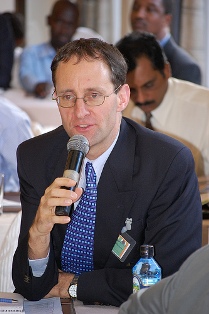 Colin Poulton is a Research Fellow at at the Centre for Development, Environment and Policy (CeDEP) at SOAS as well as a members of the SOAS Food Studies Centre. Colin has worked in Kenya, Ghana, South Africa, Tanzania and Zimbabwe.
Colin Poulton is a Research Fellow at at the Centre for Development, Environment and Policy (CeDEP) at SOAS as well as a members of the SOAS Food Studies Centre. Colin has worked in Kenya, Ghana, South Africa, Tanzania and Zimbabwe.
For the past ten years, Colin’s work has involved the application of new institutional economics to a range of issues related to agricultural markets and pro-poor economic growth in rural Africa. Specific interests include the organisation and performance of African cotton systems, the challenge of providing seasonal finance to agricultural households, the development of input markets in Africa, and the requirements for, and livelihood impacts of, sustainable intensification of smallholder agriculture.
{jcomments off}
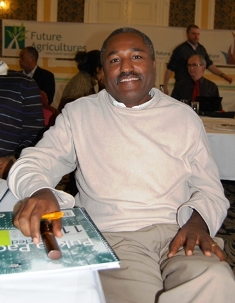 Samuel Gebreselassie is a Researcher in Agricultural and Rural Development and Environmental Economics at the Ethiopian Economic Policy Research Institute (EEPRI). He holds a PhD in Agricultural Economics from the University of Bonn.
Samuel Gebreselassie is a Researcher in Agricultural and Rural Development and Environmental Economics at the Ethiopian Economic Policy Research Institute (EEPRI). He holds a PhD in Agricultural Economics from the University of Bonn.
His papers include ‘Poverty and Food Security in Ethiopia’ and ‘Recent Experiences of Land Rental Markets in Ethiopia’. He has worked with the World Bank on a study of land tenure and agricultural development in Ethiopia
{jcomments off}
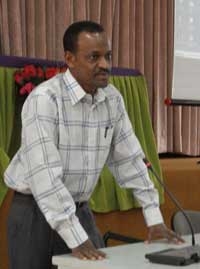
He began his career with the Ministry of Agriculture in Ethiopia and has over 10 years of experience as researcher/trainer at Imperial College at Wye (formerly Wye College) University of London. Dr Amdissa has also written articles, conference papers and developed training manuals, guidelines and handbooks in early warning, safety nets and targeting. The manuals are based on adult learning principles and encourage active learning. His background in distance education has given him the edge in this market.
{jcomments off}
 Hannington Odame is a founding member and its interim Executive Director of the Centre for African Bio-Entrepreneurship (CABE). He has a keen interest in agricultural innovation systems as well as biotechnology, food security and smallholder innovations.
Hannington Odame is a founding member and its interim Executive Director of the Centre for African Bio-Entrepreneurship (CABE). He has a keen interest in agricultural innovation systems as well as biotechnology, food security and smallholder innovations.
For the past 25 years, he has been gaining experience in agricultural knowledge sharing/learning. He has undertaken policy research and capacity building consultancy assignments for international and local agencies. He holds a PhD in agricultural innovation systems (AIS) from the Institute of Social Studies (ISS) in The Hague, the Netherlands. This study builds on his MA in Agriculture and Rural Development from ISS and BSc in Agricultural Economics from the University of Guelph, Canada.
{jcomments off}
 Lydia Ndirangu is a Policy Analyst in the Productive Sector Division at the Kenya Institute for Public Policy Research and Analysis (KIPPRA), were she focuses on agriculture and rural development policies with a special focus on food security.
Lydia Ndirangu is a Policy Analyst in the Productive Sector Division at the Kenya Institute for Public Policy Research and Analysis (KIPPRA), were she focuses on agriculture and rural development policies with a special focus on food security.
Prior to this she worked as an agricultural economist at Coffee Research Foundation (CRF) and Institute of Policy Analysis and Research (IPAR). She holds a PhD in Social Sciences from Wageningen University, at The Netherlands and MSc. Degree in agricultural economics.She has an interest in Rural financial and labour markets, food security, poverty, intra-household analysis and HIV/AIDS.
{jcomments off}
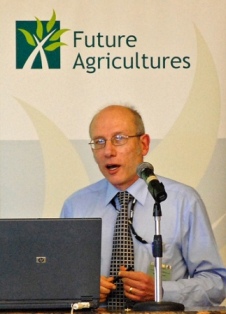 Andrew Dorward is the Economic Director at the Centre for Development, Environment and Policy (CeDEP) at SOAS as well as a members of the SOAS Food Studies Centre where he focuses on problems associated with risk, market access, institutions, and the interactions of agricultural and other activities in rural economies.
Andrew Dorward is the Economic Director at the Centre for Development, Environment and Policy (CeDEP) at SOAS as well as a members of the SOAS Food Studies Centre where he focuses on problems associated with risk, market access, institutions, and the interactions of agricultural and other activities in rural economies.
He has had a varied career in working in development projects, training and research in a range of countries, with a primary focus on Africa. He has a long-term interest in:
{jcomments off}
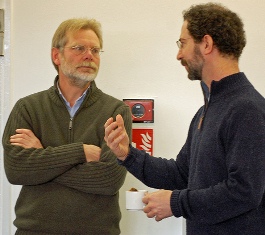 Jim Sumberg is an agriculturalist by training and has over 25 years experience working on small-scale farming systems and agricultural research policy in sub-Saharan Africa and Latin America. A key research interest has been the dynamics of change within agricultural systems.
Jim Sumberg is an agriculturalist by training and has over 25 years experience working on small-scale farming systems and agricultural research policy in sub-Saharan Africa and Latin America. A key research interest has been the dynamics of change within agricultural systems.
There have been two sub-strands to this work. The first explores the persistence of agricultural research and development themes such as de-stocking, mixed farming and fodder legumes despite consistently poor results from promotional programmes.
The second strand focuses on agricultural research as a development intervention. Here he has published on the farming systems research movement; farmer-participatory research; the potential role of concepts from industrial ‘new product development’ in targeting research; and the value of systems of innovation theory in understanding the challenges to agricultural research in sub-Saharan Africa.
More recently he has worked on the changing global food system and the growth of interest in ‘local’ food within the UK.
He joined the Institute of Development Studies (IDS) as a Research Fellow in October 2009. Previously he served as Programme Director at The New Economics Foundation and Senior Lecturer in Natural Resource Management in the School of Development Studies, University of East Anglia. He has also held research positions at WADRA — the Africa Rice Centre, the International Livestock Centre for Africa, CARE International and the Gambian Livestock Department.
{jcomments off}{jathumbnail off}
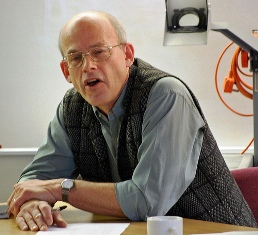 Michael Loevinsohn is an ecologist and epidemiologist. He has worked for many years at the interface between environment, rural society and health, seeking to throw light on the dynamics of systems undergoing rapid change. Often this has involved making use of natural experiments. In each case, the work has suggested opportunities for multiple benefits from more equitable and durable environmental management.
Michael Loevinsohn is an ecologist and epidemiologist. He has worked for many years at the interface between environment, rural society and health, seeking to throw light on the dynamics of systems undergoing rapid change. Often this has involved making use of natural experiments. In each case, the work has suggested opportunities for multiple benefits from more equitable and durable environmental management.
His current interests include:
Michael joined the Institute of Development Studies (IDS) in October 2009 as a Research Fellow. Before joining IDS, Michael directed Applied Ecology Associates in the Netherlands. Earlier, he worked with the CGIAR, IDRC and FAO.
{jcomments off}
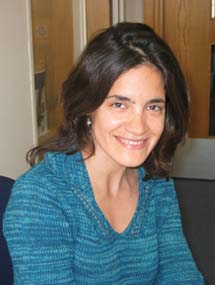 Lidia Carbral is an economist and social scientist. She currently works as a Research Fellow at the Overseas Development Institute (ODI). Lidia has experience in public policy formulation and implementation (PRSP, MTEF & State Budgets), budget system analysis (Public Expenditure Reviews) and aid management (SWAPs), with strong focus on south-eastern Africa and agriculture and rural development.
Lidia Carbral is an economist and social scientist. She currently works as a Research Fellow at the Overseas Development Institute (ODI). Lidia has experience in public policy formulation and implementation (PRSP, MTEF & State Budgets), budget system analysis (Public Expenditure Reviews) and aid management (SWAPs), with strong focus on south-eastern Africa and agriculture and rural development.
Her current research interests include policy processes in the agriculture sector, with a focus on government-donor interfaces, and the contemporary role of the state in the sector.
{jcomments off}
Everyone is agreed that one of the central components of achieving an „African Green Revolution? is to tackle the widespread soil fertility constraints in African agriculture. To this end, AGRA – the Alliance for a Green Revolution in Africa – has launched a major new „Soil Health? programme aimed at 4.1 million farmers across Africa, with the Bill and Melinda Gates Foundation committing $198 million.
We have had some fantastic – and varied – contributions to the debate. Many thanks to everyone who contributed. This note aims to draw out some themes and emerging conclusions. It is not comprehensive, and I urge everyone to read through the contributions, as there are many rich examples and interesting ideas about ways forward.
To produce the food necessary to reduce high world food prices and meet the future demands of a growing and more affluent population, large-scale commercial farming needs to be encouraged. Any romantic illusions about small-scale farmers should be set aside. Or so Professor Collier writing recently in Foreign Affairs (November/December 2008) argues.
How can Africa’s farmers, scientists, development practitioners, private entrepreneurs and public officials, with the support of the international community, spark a Green Revolution in Africa,one that responds to the region’s unique social, political and ecological conditions? That was thechallenge presented to the over 113 delegates from 29 countries who attended a set of linked discussions at the Salzburg Global Seminar in late April/early May 2008. The main purpose of the deliberations was to assess the most critical issues and to review, refine and articulate an agenda for a new sustainable “Green Revolution” for Sub-Saharan Africa. The delegates were tasked with answering the question: What are the core elements of a “uniquely African Green Revolution?”
If investments are good for growth, then a questionwhich has always exercised the minds of economistsand policy-makers historically, is just how togenerate, attract, secure and sustain them. This isnot a question to which there are easy answers,although there is no shortage of economic modelswhich seek to identify the determinants of growthand propose universally applicable principles.Oneperspective that has become dominant in policycircles suggests that “secure” property rightsconstitute the sine qua non for the generation ofinvestments, as well as for increased productivity,income and growth.
DFID’s renewal of its partnership for FAC’s work means the Consortium can now:
In addition, this grant will enable FAC to strengthen the capacity of young African researchers working on agricultural policy issues by providing fellowships and student fieldwork bursaries.
Finally, DFID support will strengthen our efforts to establish procedures for transferring the Consortium’s Secretariat from the UK to Africa by April 2013.
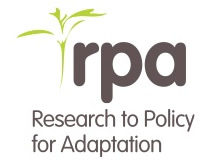
DFID/IDRC-funded Research to Policy for Adaptation (RPA) project provides accessible tools, methods and conceptual approaches for researchers to analyse the policy processes for climate change adaptation in a specific country.
RPA is helping to build researchers’ capacity to understand and influence policy processes around adaptation.The RPA initiative conducts policy focused case studies and establishes policy engagement strategies and mentoring relationships between RPA researchers and academic partners. The RPA project is working on case studies on policy processes related to –
The RPA project looks at ways to influence the policy-making processes and local government. Researchers analyse policy process from three overlapping angles: narratives and evidence, actors and networks, and politics and interests.These findings form the basis for identifying policy spaces and areas where they may help the formulation of adaptation polices in Africas.
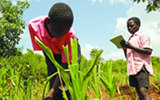
The economic, social and cultural contexts of agriculture are changing fast, as evidenced by significant shifts in the patterns of food production and consumption. An increasingly globalised world also means that there is now greater access to fast-evolving communication and media technology, which improves information flows and adds to the feeling that the world is getting smaller. However, development and growth processes still move at different speeds in different locations, even within countries. These inequalities are increasingly visible to people living in remote rural areas, often characterised by under-investment and slow growth.
Against this backdrop, we also have the largest population ever of young people in the developing world. In all, there are roughly 1.5 billion people aged 12-24 worldwide, 1.3 billion of whom live in developing countries. Sub-Saharan Africa is home to over 200 million young people, three quarters residing in rural areas. Growth in the population of African youth is not projected to peak for another 20 years.
Recent policy dialogues on the future of food and farming facilitated by the Future Agricultures Consortium’s Ethiopia team point to the fact that it is not just the youth who have an aversion to farming. Their parents often hold the same view, preferring their children to move away from rural areas entirely because they associate rural life with poverty.
A recent IDS-University of Ghana study of young people in cocoa farming communities paints a mixed picture of attitudes towards farming, but with strong indications that cocoa farming is not seen as an attractive area of work. The minority who could see a future for themselves in cocoa farming all expressed a wish not to farm in the same way as their small-holder parents. Rather, they saw themselves managing mechanised farms with more technical inputs.
These changing aspirations present considerable challenges and opportunities – for young people themselves, for rural communities and for the agricultural sector. While young Africans are increasingly mobile, many still live in rural areas, and agriculture and rural employment will continue to play a key role in the livelihoods of many. Thus, productivity-led agricultural growth is needed to create forward and backward linkages and new rural employment opportunities.
But what is the scope for agricultural growth and rising employment in different parts of rural Africa? What policies should African countries adopt to support growth that maximises employment creation? What programmes can be developed and implemented that will benefit large numbers of rural youth? What activities and approaches – training and education, strengthening of rural organisations, investments in new technologies, value addition and income-generation, etc. – will give Africa’s rural youth the knowledge and skills they need to benefit from and contribute to more vibrant rural economies? Researchers and policy makers have only just begun to consider these questions.
To fill this gap, the Future Agricultures Consortium is embarking on new research, outreach and engagement activities over the next three years that will explore how policies and institutions, including social protection measures, can support Africa’s rural youth to flourish, tapping into their energy, creativity and willingness to take risks and innovate in ways that bring about productive outcomes and improved livelihoods.

The economic, social and cultural contexts of agriculture are changing fast, as evidenced by significant shifts in the patterns of food production and consumption. An increasingly globalised world also means that there is now greater access to fast-evolving communication and media technology, which improves information flows and adds to the feeling that the world is getting smaller. However, development and growth processes still move at different speeds in different locations, even within countries. These inequalities are increasingly visible to people living in remote rural areas, often characterised by under-investment and slow growth.
Against this backdrop, we also have the largest population ever of young people in the developing world. In all, there are roughly 1.5 billion people aged 12-24 worldwide, 1.3 billion of whom live in developing countries. Sub-Saharan Africa is home to over 200 million young people, three quarters residing in rural areas. Growth in the population of African youth is not projected to peak for another 20 years.Ironically, while there are more young people in the African population, across the continent the ageing of the farming population is causing concern. Young people are choosing not to pursue livelihoods in the agriculture sector, especially as farmers.
Recent policy dialogues on the future of food and farming facilitated by the Future Agricultures Consortium’s Ethiopia team point to the fact that it is not just the youth who have an aversion to farming. Their parents often hold the same view, preferring their children to move away from rural areas entirely because they associate rural life with poverty.
A recent IDS-University of Ghana study of young people in cocoa farming communities paints a mixed picture of attitudes towards farming, but with strong indications that cocoa farming is not seen as an attractive area of work. The minority who could see a future for themselves in cocoa farming all expressed a wish not to farm in the same way as their small-holder parents. Rather, they saw themselves managing mechanised farms with more technical inputs.
These changing aspirations present considerable challenges and opportunities – for young people themselves, for rural communities and for the agricultural sector. While young Africans are increasingly mobile, many still live in rural areas, and agriculture and rural employment will continue to play a key role in the livelihoods of many. Thus, productivity-led agricultural growth is needed to create forward and backward linkages and new rural employment opportunities.
But what is the scope for agricultural growth and rising employment in different parts of rural Africa? What policies should African countries adopt to support growth that maximises employment creation? What programmes can be developed and implemented that will benefit large numbers of rural youth? What activities and approaches – training and education, strengthening of rural organisations, investments in new technologies, value addition and income-generation, etc. – will give Africa’s rural youth the knowledge and skills they need to benefit from and contribute to more vibrant rural economies? Researchers and policy makers have only just begun to consider these questions.
To fill this gap, the Future Agricultures Consortium is embarking on new research, outreach and engagement activities over the next three years that will explore how policies and institutions, including social protection measures, can support Africa’s rural youth to flourish, tapping into their energy, creativity and willingness to take risks and innovate in ways that bring about productive outcomes and improved livelihoods.
The Pastoral Communication Initiative, a long-term partner of FAC, will help facilitate this work and manage funds. We hope someone from PCI will attend the workshop too. As you know the first step in this work took place at a PCI organised event in Borena, Ethiopia earlier in 2009. The short booklet (See: Pastoral Innovation Systems) emerging from this event provides the background to our work. The level of enthusiasm and interest among pastoralists at the Borena event (from across southern Ethiopia and northern Kenya) reaffirmed our belief that this was a theme that was both in much demand and potentially of great interest.
The future work will be elaborated in detail at our Nairobi meeting. It starts from the observation that there are lots of innovations going on in pastoral areas in response to a variety of pressures and stresses (climate change, shifts in markets, conflict etc.) and around different areas of pastoral livelihoods (production, marketing, social organisation etc.). These innovations may be technical, social, organisational, but are geared at meeting pressing needs. They are also differentiated – richer/poorer, men/women, young/old – with different groups innovating in different ways. There is not just one pastoral system but many. These are poorly understood, and there are limited sharing mechanisms to allow the spread of innovation even within communities let alone across ethnic groups and across geographical borders. The starting point of this work is that documentation of innovations (in their social-cultural-economic contexts) and encouraging the sharing of them will be an important resource for pastoralists in the region.
Further, the work emerges from another observation: that these more informal pastoral innovation systems are disconnected from formal systems of innovation (from research and development institutions, both public and private sector). This results in turn in the underperformance of both formal and informal innovation systems, and multiple opportunities are missed. Bringing such systems closer together may result in some real benefits, allowing pastoralist access to new technologies and expertise and for the public good R and D system to respond to a wider set of priorities set by users themselves. For the private sector, such an interaction might open up new market opportunities and a re-gearing of R and D focus. In order to test these assumptions, one element of the project will be to bring the actors from formal and informal systems, public and private, together.
Thus the proposed research has the following elements:
1. Documentation of (differentiated) pastoral innovation systems in a number of sites
2. Analysis of the key characteristics of pastoral innovation systems – commonalities and differencesLinking pastoral innovation systems with formal innovation systems, public and private.
3. In our workshop discussions we will design a detailed plan to get 1 going, and think about issues in 2, perhaps developing some concrete hypotheses to explore. And, hopefully through collaboration with colleagues at ILRI, we wil be begin to think about how to approach 3.
We will develop our research together. Beyond these ideas we do not have any detailed plan prepared in advance. This invitation to participate is based not on standard consultancy terms, but an invitation to join the Consortium and help develop this strand of work together. It would be useful to introduce ourselves to each other in advance of our meeting in Nairobi. Could you all send to this email list a copy of a short cv? Mine is attached here(a bit old I am afraid). The team so far is:
The problem has been, for decades, that the world’s top scientists have not concentrated on the most important problems of small-scale farmers. If someone is dying of thirst, and you give him fried chicken, you are not going to save him, even if he does also happen to be malnourished. You have to respond to people’s most important needs–their limiting factors.
By far the largest problem worldwide with respect to the lack of appropriate agricultural technologies is that the CGIAR system, dominated by plant geneticists, has already decided what small farmers need, without being willing to look at all the indications that their priorities are dead wrong. The limiting factors of the vast majority of smallholder farmers in Africa are NOT genetic. The limiting factors for African smallholders are soil fertility, and more specifically soil nitrogen (and to a lesser extent, phosphorus), and water. But inorganic fertilizer is now priced way beyond smallholders’ reach. This fact is recognized by knowledgeable agronomists, and that is why they talk so much about subsidizing inorganic fertilizers. But subsidized fertilizers will only prolong the agony; they will artificially make green manure/cover crops and soil-enriching agroforestry less attractive, thereby putting off the moment when farmers will switch to the only technologies that can truly and sustainably solve the problem of African soil fertility.
Micro-scale water management is the second very important answer to Africa’s low productivity, and the CGIAR system has done even less along these lines. I know some small NGOs (with budgets in the hundreds of thousands of dollars) in Central America that have developed more small-scale water management technologies than has the entire CGIAR system.
If you are genuinely interested in the well-being of small-scale farmers, you will look into EPAGRI’s work with green manures in Santa Catarina State, Brazil, COSECHA’s work with small-scale water management in southern Honduras, FAO’s previous work in Lempira Dept., Honduras, green manure/cover crop work in Zambia, small farmers’ innovations near Bamenda, Cameroon, and even ICRAF’s work in Kenya and Malawi. The answers–the technologies Africa’s farmers really need–are already out there in the field. I would be happy, together with people like Jules Pretty and Pedro Sanchez, to develop an itinerary for you to go and study these technologies and their rapid adoption by smallholder farmers.
To make science and technology work for small farmers in sub-Saharan Africa I think it is imperative that account be taken of within-field soil variability. This is especially true in semi-arid areas, but also in other parts of Africa.
The farmers themselves take variability into account: they often manage different parts of a field in a different manner. They do this because it is more efficient, and because it reduces production risks. Technology developments and technology transfers that do not connect with this site-specific management by farmers, and with the underlying reasons, risk being ignored or turned down. Farmer, extension and scientific knowledge about short-distance soil and crop growth variability must be combined for
– improved knowledge, understanding and communication by and for all parties concerned
– better design and analysis of agronomic experiments
– more relevant extension approaches
– better management options for the farmers.It is not difficult to achieve this.
It just needs a change in attitude from seeing variability as a problem to seeing it as an asset and an opportunity for subsistence farmers.
One simple step is to use an easily assessed environmental parameter as a co-variable in the analysis of agronomic experiments. A well-chosen parameter will explain a signifcant part of the spatial (and temporal) variability in experimental results. That same parameter can then be used to extend the experimental results to farmers. Simple parameters that a farmer can also use include microtopography (high spots and low spots in a field); degree of crusting of the soil; distance from certain termite mounds or from certain trees; wet parts an dry parts of a field; and the presence and absence of certain weeds.
A 12-page brochure on a variability project at ICRISAT Sahelian Center in Niger, that aimed to do just this, was financed by IUCN’s Commission on Ecosystem Management and is available from http://cmsdata.iucn.org/downloads/cem_csd_16_brochure_sahel_hq.pdf (2.6 Mb). Its pictures tell the story and a number of references are included. Its main conclusions are given below. I will be happy to discuss this further with whomever may be interested.
The following practical results from the variability research in Niger can already be extended to farmers and/or researchers:·
Suitable technologies should be developed in a participatory approach with farmers playing a major role. Small scale farmers need technologies that are site specific and tested at the village/community level since there are many farming systems dictated by varying agro ecosystems. In order to ensure that integrated crop management technologies are appropriate for small scale farmers, the emphasis should be on facilitating learning about suitable science and technologies.
This will empower farmers with new ideas that will allow them to experiment and see what works best within a given context and available resources. The underpinning characteristics of the science and technologies should be their sensitivity to resource limitation and capacity to withstand biotic and abiotic stresses. For example water saving technologies is desirable to overcome water deficit under many growing conditions. The technologies developed should aim at mitigating climate change at the same time user friendly to women who are the majority of agricultural producers. It is also important that the technologies can be disseminated by appropriate means and in consideration with the farmer’s level of education, language and easily accessible dissemination tools.
Sustainability: many factors contribute to sustainability of agriculture: the most important of all is the capacity of soil-inhabiting organisms to thrive, because their activities are vital (literally) to formation and recurrent re-formation of soil structure, maintaining soil porosity. Its condition affects
Organic matter: Organic matter is not merely a source of plant nutrients (albeit at low concentrations). It is also the substrate for soil organisms’ activity, so a regular supply is needed, as the organisms’ metabolism results in its transformation. Tillage is a potent cause of oxidation of organic matter – to atmospheric CO2 – having caused soil organic matter to be lost from soil faster than it is returned from conventional cropping systems, with negative effects on soils’ cation exchange capacities and thus on capture and slow release of plant nutrients from applied fertilizers.
Tillage can thus have two negative effects:
Floods, water shortage (for plants, for rivers), sub-optimal plant growth, soil erosion are inter-related to sub-optimal conditions of soil porosity, associated with tillage. Optimum conditions of soil porosity can only be restored through the biotic activities of soil-inhabiting organisms.
There seems to be a widespread assumption that tillage agriculture is the only way to produce crops, onto which ‘soil management’, ‘erosion control’, ‘water management’ are seen as ‘add-ons’ rather than integral parts of the land-management system(s)..
‘Conservation agriculture’:
is mentioned briefly, apparently as an option, in the paper summarizing the Salzburg Seminar. Its three interlocking component features are:
The interactions of the physical, chemical, biologic and hydric components of soil productivity are key to Conservation Agriculture’s success when functioning in good conditions of climate and management. These aspects of optimum CA, and its outcomes, deserve close study. These are features which any/all production systems should have in common, though their expression will vary from one situation to another (environmental and/or human). All too commonly their optimum combined expression has been damaged, obscured or unbalanced by inadequate land management in the past. CA, when optimised for a particular situation, is a means of achieving and maintaining the integration of crop (and even pasture and/or silvicultural) production with effective water management, erosion minimisation/avoidance, drought-effect minimisation, biodiversity in the soil, carbon retention in the soil, improvement of people’s livelihoods, and consequent wider benefits to both society and to the environment.
If the soil is kept in good condition (physical characteristics = ‘soil quality’; biological characteristics = ‘soil health’), all other attempts to improve the lot of farm-families have a better chance of lasting success than if the soil itself continues to degrade.
In a given situation, we need to be able to characterise the condition of the soil as it is, the condition of the soil as we would like it to be, how to get from the first condition to the second, and how to maintain the latter when we have got there.
Implications:
The follow-through of these ideas indicate significant implications for research, advisory work, policy, education and training at all levels, and the ways in which AGRA can have fullest effects.
I agree with the following statement “To empower smallholder farmers to participate in an African Green Revolution, improvements should be made in both: functioning and performance of agricultural input markets so that viable smallholders can access inputs at cost effective prices; and empowering vulnerable smallholders with purchasing power so that they can participate in the market process”. Balu Bumb, Program Leader, Policy, Trade, and Markets Program at the International Fertilizer Development Center (IFDC)
The so-called subsistence farmer is forced to produce for her family’s subsistence by the huge difference between the low farm-gate prices for what she produces and the high market prices for the same products. This differential means that she has a comparative advantage in producing all her family needs herself rather than producing some things for sale and relying on the market for things she is not technically best placed to produce. Only the better off can afford to be irrational in what they choose to produce. The subsistence farmer is operating at the edge so every production and marketing decision has a serious impact on their welfare and improving market efficiency has a major influence on their production options and technologies.
Therefore improving the functioning and performance of agricultural input markets will only be a partial solution. Markets must be improved for inputs, outputs and capital to level the playing field for smallholders and enable them to raise their incomes. I am deliberately not including the market for land because I am yet to be convinced that there is an effective way of protecting smallholders from speculative buyers which is neither in their long-term interest nor are the buyers likely to be more productive farmers.
It appears presumptuous to try to add to the value of the comprehensive discussions at the Salzburg Global Seminar, and the wide-ranging report of its deliberations and recommendations (‘Towards an African Green Revolution’).
In looking for an African paradigm the Seminar did not resolve the fundamental question of relating demand with supply factors in driving ‘agriculture-led growth’. This issue seems to me to be also unresolved in debates about the Asian Green Revolution. In India, was it in essence a technological revolution, solving supply constraints, as popularly represented, or a transformation of the economic system led by growth in demand? Rapid population growth and massive urbanization (including successful industrialization via an Indian, labour-intensive model) were essential components. Can we imagine an Indian green revolution without these?
The slow growth of productivity in African agriculture is nearly always blamed on supply constraints. There is alleged to be a ‘crisis’ in African agriculture summarised by an ‘inability’ to produce enough food and an increasing dependency on imports. In the most extreme case (Zimbabwe) it is obvious that policy not supply constraints is to blame. Has it occurred to anyone that the close correspondence between food commodity production growth and demographic growth over the last 45 years could be explained by poverty (lack of purchasing power and consequently low prices)? Slack world prices for African exports have meanwhile undermined the export-led model promoted by the World Bank.
Incentives are critical determinants of the uptake of new technology, but often neglected. Certainly, markets can be made more efficient, and more accessible. Credit can overcome capital constraints. But a hard look at the structure of agricultural producer incentives in every African country is surely needed urgently.
Since 1960 most countries have at least doubled their population and at the same time urbanised to an extent that should not be ignored by agricultural planners. The leading example is Nigeria. In the last decade, a critical threshold was passed (50% urbanization). Now, less than half the population have the responsibility for feeding more than half of it. While this transition was taking place, there is evidence of dynamism in the agricultural sector (increased production of yams and cassava per capita, decline in per capita food imports, growth in output of niche commodities while there was a long-term consistency (though fluctuating annually) in output of cereal grains and pulses per capita,), during the period since the adoption of a new policy framework in the 1980s. Other countries may follow a similar course, if they are not already doing so, by virtue of demographic realities.
Agricultural revolution takes place in a multi-sectoral economic context. Most of the Salzburg Seminar discussions appear to have concerned themselves with sectoral policies and actions. An implied assumption appears to be that markets can be taken as ‘given’ and are infinite; therefore, supply constraints must be the problem.
The limitation of African urbanization as a driving force for agricultural revolution – through a radical transformation of rural-urban relations – is the failure of classical industrialization strategies to provide new employment and incomes on a sufficient scale. Poverty levels in many cities are only slightly lower than in some rural areas. Poverty reduction strategies are therefore a necessary ingredient of agriculture-led growth.
This suggests that the necessary conditions for agricultural revolution may lie outside the agricultural sector. This seems to have happened in England in the eighteenth century as well as in India in the twentieth. Precolonial African models are also available. For example, the intensification of small-scale farming in the Kano Close-Settled Zone of Nigeria during the nineteenth century was driven by demand growth for a range of commodities in its metropolitan market.
Although the Salzburg report rightly identifies participatory and accountability dimensions of policy as critical, these priorities seem to me to represent pathways rather than goals. In debates on African green revolution the function of consumer demand is frequently left out of the picture. Is this because everybody knows that India achieved its revolution through protecting its farmers (and its industry) from global competition, whereas (by a silent consensus) Africa must struggle to find its way under Doha conditions? The construction of an African paradigm needs to come to grips with these externalities and realities of macro-economic policy.
Science and Technology will only work for small-scale farmers if agricultural research is carried out differently than much of it has been in the past. Lessons from research that has successfully linked knowledge with action – changes in policies, practices, institutions and technologies – contributing to sustainable poverty reduction suggest the following principles are key:
Problem Definition. Projects are more likely to succeed in linking knowledge with action when they use processes and tools that enhance efficient dialogue and cooperation between those who have or produce knowledge and decision-makers who use it, with project members defining the problem they aim to solve in collaborative, user-driven ways.
Program Management. Research is more likely to inform action if it adopts a “project” orientation and organization, with dynamic leaders accountable for meeting use-driven goals and targets and the team managing to avoid letting “study of the problem” displace “creation of solutions” as its research goal.
Boundary Spanning. Initiatives are more likely to link knowledge with action when they include “boundary organizations” or “boundary-spanning actions” that help bridge gaps between research and user communities. This boundary-spanning work often involves constructing informal new arenas, in which project managers can foster user-producer dialogues, joint product definition, and a systems approach free from dominance by groups committed to the status quo. Defining joint ‘rules of engagement’ in the new arena that encourage mutual respect, co-creation and innovation that addresses complex problems improves the prospects for success.
Systems integration. Projects are more likely to be successful in linking knowledge with action when they take a systems approach that recognizes scientific research is just one ‘piece of the puzzle.’ Such systems-oriented strategies aim to identify and engage with key partners who can help turn co-created knowledge generated by the project into action (new strategies, policies, interventions, technologies) leading to better and more sustainable livelihoods.
Learning orientation. Research projects are more likely to be successful in linking knowledge with action when they are designed as much for learning as they are for knowing. Such projects are frankly experimental, expecting and embracing failures so as to learn from them throughout the project’s life. Such orientations towards learning cannot thrive without appropriate reward systems for risk-taking managers, funding mechanisms that enable such risk-taking, and periodic external evaluation.
Continuity with flexibility. Getting research into use generally requires strategies aimed at strengthening linkages and effective patterns of interaction between organizations and individuals operating locally where impact is sought. A key role of boundary spanning work/organizations is the facilitation of processes that create strong networks and build innovation/response capacity of the system. Co-created communication strategies and boundary objects/products are key to the longevity and sustainability of project outcomes and impacts.
Manage asymmetries of power. Efforts linking knowledge with action are more likely to be successful when they come up with empowerment strategies aimed at ‘leveling the playing field’ in order to generate hybrid, co-created knowledge and deal with the often large (and largely hidden) asymmetries of power felt by stakeholders.
The current discussion on ‘Making science and technology work for small-scale farmers’ is closely linked with the earlier debate on the appropriateness of farmers’ voices in the African Green Revolution [AGR] initiative. Essentially, the thinking of agricultural scientists and technologists will be more effectively put to use if they align with those of the smallholder farmer. As I had earlier indicated, there is the need to revisit and strengthen Research-Extension-Farmer linkage if the dream of realising a sustainable AGR is to be achieved. There are a lot of lessons to learn [either way] in the process of a 2-way information sharing within the linkage system.
Technologies that are patterned in line with the taste and capability [in terms of finance and usability] of small farmers will undoubtedly work for the purpose for which they are designed. Sincere and thorough farmer consultations by the researcher/technologist will, therefore, be needed in the design and development of any technologies aimed at bringing about an agrarian change amidst the small-holders. Aside some field experience acquired over the years, Everett M. Rogers diffusion studies have shown that innovations that are: feasible; compatible [with farmer’s socio-cultural milieu]; cost effective; socially and economically advantageous; divisible; simple [to use]; and ‘triable'[in bits] are always popular amongst the end-users, all things being equal. Previous investigations conducted by us have also shown that technologies or innovations that are [environmentally and farmer] user-friendly and result effective are an answer to farmers’ yearnings and aspirations.
Considering all the above innovation characteristics in the process of technology development for the small farmer will be worth the effort of the researcher after all.
The high contribution of small-scale farmers to Africa’s agriculture is not in doubt. This group produces the lion’s share of Africa’s agricultural productivity, and also contributes significantly to the GDP of several countries. In spite of this, small scale agriculture is inadequately targeted in research interventions, especially in science and technology. This has given rise to a wrongful impression that smallholder agriculture is only about the preservation of ancient methodologies and systems, and does not need to be researched.
The future of smallholder systems is threatened if it cannot be strengthened through science and technology based research. Such research must however be explored, taking into account the key fundamentals of these systems and aim to improve overall productivity without sacrificing the core elements of their sustainability – such as their biodiversity and other elements of their system resilience. The research must also begin from a deep understanding of the smallholder circumstances and realities, and target the kind of interventions that are realistic at the smallholder scale of production. An integrated agricultural research for development approach needs to be used in which the voice of the farmer is heard in the identification of potential realistic outcomes for which S&T research is then targeted. The issue of financing however needs to be addressed as part of an integrated approach, as science and technology products could require initial capital outlay that may not be available to some farmers.
Science and technology research for small-scale farmers need to orient towards efficiency and wealth creation for smallholders. How can research help to strengthen the value of the commodities generated from smallholder systems in a sustainable manner, and how can these be linked to markets? There needs to be more emphasis on agronomic, breeding and biotechnology improvements on indigenous crops of use and importance to local people and markets. Research on integrated pest management, for instance, needs to explore the combination of indigenous knowledge with new science and technology opportunities. Such research should aim at increasing yields and the expression of traits of importance to local people and to markets. This should also include research on neglected and under-utilized species.
The role of science and technology cannot be separated from the issue of public-private partnership. The private sector needs to be supported to get involved in supporting science and technology research that improves smallholder systems and enhances the wealth creation potential of these systems. Perhaps new equity instrument should ne developed by funding agencies such as the International Fund for Agricultural Development (IFAD), and other development banks, to support private sector interests and investments in science and technology that is aimed at strengthening the productivity and wealth creation of smallholder farmers.
African Green Revolution is geared towards making every African hunger free, following a balanced diet and with enough resources to take care of other needs. This objective is in line with AU/NEPAD CAADP objectives. The CAADP Round Table process initiative is an evidence-based and outcome-based policy and implementation framework that encourages collaboration and peer review and learning across countries. It forms an important opportunity platform for exchanging ideas and information between stakeholders, development partners, donors and researchers to map out ways to an increased agricultural productivity in Africa. The food crises coupled with the problem of climate change all have significant implications for our ability to improve and increase agricultural growth. These crises came at a time when Africans had already taken their own destiny into their own hands by their governments committing 10% of their GDP to agricultural development.
Agriculture is often neglected as one of the major factors that have contributed to Africa’s economic growth over the last decade. There is no doubt that the sector has underperformed over the last decade as a consequence of its neglect by governments and development agencies that provide virtually all the funding to the sector. Public investment in the sector fell from 6.4% in 1980 to 4.5% in 2002 (IFPRI). Donor interest in the sector also fell remarkably from 26% of annual development assistance to 4% presently. There is a further speculation of donor disengagement.
The cuts in funding to agriculture have adversely affected the level of innovation in the sector in spite of the very high returns on investment in agricultural innovation. An evaluation of 700 agricultural research and development projects in developing countries across the world shows that investment in these projects generated an internal rate of return of 43%. Furthermore, an IFPRI study (Fan, 2008) shows that agricultural research, extension and rural infrastructure are the three most effective public spending items in promoting agricultural growth and poverty reduction. Of these three, agricultural research has the greatest overall impact on poverty in developing countries. What is more, it has been estimated that a 1% increase in crop yield reduces the number of poor people by 0.72 percent in Africa (approximately 2 million people). Thirtle et al. (2003) show that increases in crop yield have greatest impact in Africa.
The decision making process regarding investment in agricultural research and development, and innovation has not been informed by evidence. This is perhaps a consequence of weaknesses in the architecture of institutions responsible for the sector’s advocacy at various levels—national, sub regional and continental. The Forum for Agricultural Research in Africa (FARA) is responsible for continental level advocacy in support of agricultural innovation, dissemination and adoption in particular CAADP Pillar IV:
(a) increased and better harmonized investment,
(b) human and institutional capacity strengthening,
(c) policies and markets(for example, trade, Biosafety and biotechnology),
(d) tested innovation practices, access to knowledge, information and technologies; and
(e) partnerships to promote innovation. FARA’s experiences in advocating and facilitating agricultural research on the continent in order to meet the agricultural output targets set by African leaders is critical. CAADP pillar IV together with the other pillars is the response to an increase in productivity, reducing hunger and raising income of Africa’s poor.
During this last contribution we bear in mind the important recommendations emanating from the conference. Let us also be cognizant of the fact that to realize the green revolution actions on the recommendations can only take place at the national level. This means that effective partnerships must have the national players at the center. In this regard I would like to offer you the Africa Rice Center (WARDA) partnership model that has served the center well.
This partnership brings together the Directors Generals of NARS and they operate under an umbrella called National Experts Committee (NEC). They meet on alternate years to review the research agenda, comment on priorities and the impact being achieved. In turn NEC makes recommendations for better implementation of jointly proposed programs including, monitoring and delivery of products and services appropriate at the geopolitical level.
The NEC plays a major in advising the Council of Ministers (COM) constituted by the 22 member countries. In this way the recommendations made by NEC receives direct attention of the ministers of each country. This linkage brings together a Center, NARS DG and the Ministers of agriculture. It cultivates confidence and trust with national governments. It also ensures the proposed policies are articulated at the appropriate and highest level. Through task force and network mechanisms a wider partnership with universities, foster processes that equip those in the uptake chain with the necessary skills to bring about development impacts, reward capacity-strengthening activities by its scientists, and incorporate capacity strengthening activities that are within approved programs and projects. The goal of WARDA’s partnership is to improve livelihoods in rural and urban populations through strengthened partnerships and capacity, for dissemination of improved technologies.
In WARDA’s view ppartnerships and coherence can be attained only when all actors in the R&D process are fully engaged in the research planning, priority setting and a transparent joint implementation of programs where the partners enjoy equal mutual respect. Methods of coordination and accountability should be discussed and periodically adjusted to suit local situations. CAADP and FAAP are beginning to provide suitable platforms for coordinating the actors at the national, regional and continental level. However, due to Africa’s heterogeneity, actions among the key processes and initiatives going on to promote a Green Revolution requires innovative and flexible approaches. To ensure that these processes are transparent and coherent there is a need to involve law makers especially parliamentarians, nationally and across the region. Similarly new alliances are being formed and it is crucial to ensure that these too are rooted in the community where collective actions are taken.
What is meant by ‘coherence’? I take it to mean achieving a greater convergence between the following: policies affecting agriculture (including livestock production); crop and livestock producers’ livelihood goals; and supporting research and development efforts. Within this trinity, there is a widespread agreement that producers (and especially small-scale, poor producers) have too often been relegated to third place. The Salzburg report lays a proper emphasis on their full participation, notably in
Often repeated is the familiar expression ‘capacity building’
Achieving coherence must go beyond rhetoric. At the project level, communities and research/development agents can and do achieve coherent partnerships but bridging the gap to policy is more difficult. Policy is formulated at a different scale and the policy process (though not necessarily particular policies) has greater continuity than projects. Bridging research/ development and policy calls for continuity, financial resources, a common language, local ownership of the process, enlightened national leadership and stakeholder-based frameworks for negotiation and advocacy. In particular, scale differentiation between local interests (which may or may not achieve consensus) and national policy processes (which have to take account of interests outside agriculture or the rural sector) is a major challenge in trying to bring rural people into policy formation. The new democratic institutions associated with decentralization policies are addressing natural resource management issues (e.g., community forest management). They need to extend their remit into such areas as market regulation, price policies, and input supply. These and other policies determine the incentive structures for producers to invest in increasing output.
Agricultural development literature has been understandably sectoral in scope, but it should not be assumed that new technologies or management systems can find their way into use without paying proportionate attention to economic or political considerations. In development practice, outside interventionists cannot directly influence policy. This must be attempted by newly-empowered communities within the existing political framework. But the local community will be listened to less, the ‘higher’ up the ladder they aim. However, the research/ development community is no longer necessarily external in personnel (though in funding, it often is). This creates a new opportunity for co-ownership of development initiatives by national or local research or advocacy institutions.
Depending on specific conditions, mechanisms, frameworks or protocols are needed to link research, development and policy with communities in ways that avoid condescension or patronage towards local communities while at the same time recognising national versus local interests and longer versus shorter time perspectives. It seems less than ideal for this to be undertaken as a specialism rather than fully integrated with the research and development – but such integration calls for an interdisciplinary approach.
In seeking to create mechanisms for policy dialogue, two strategies suggest themselves:
Discussions on green revolution seem reluctant to embark on such issues, but both research and developmental experimentation is needed, country by country, to evaluate options for planting structural and institutional frameworks whose continuity can be guaranteed after externally funded projects and researchers withdraw. The ‘capacity building’ so much favoured in the Salzburg report needs to accomplish a revolution in attitudes among indigenous disciplinary specialists (often trained abroad) who need to assume facilitative or advocacy roles alongside the communities they research or ‘develop’ in the long term.
The case for such institutional frameworks centred on agriculture rests basically in the lack of an alternative, because new democratic processes have not yet proved competence in agricultural issues – more pressing, perhaps, are political negotiations between opposed interests that have hijacked party systems. Rural people still say they feel marginalised; young adults prefer to abandon the village in favour of an insecure but perhaps better rewarded urban life. Agriculture sits uncomfortably on shifting sands of social change. The future performance of the sector, I suggest, is inevitably bound up with political realities and cannot be wholly encapsulated in a world of soil fertility, crop genetics, agronomic technologies, etc. – important though these are;
Much valuable action research has been conducted on new or adapted institutional structures in a context of natural resource management (a significant part of it supported by the Natural Resources Systems Programme of the UK Department for International Development, 1995-2006). A worthwhile objective would be to carry out a synthesis and evaluation of such work, in terms of its applicability to an African Green Revolution.
Despite their depth and breadth, established political and economic understandings tend to take a somewhat circumscribed view of innovation and development alike. Amidst the many rich subtleties, there tends to be an emphasis on what might be called the ‘scalar’ attributes. For instance, attention often focuses on the pace with which advances take place – frequently involving fears that competitors may proceed more quickly. There is also an understandable preoccupation with the efficiencies with which invested resources yield positive outcomes. There are important concerns over the distributional effects of specific resulting policies and technologies (addressed below). And (in many contexts) increasing priority is attached to the wider social and environmental impacts associated with given forms of innovation and development. Although the metrics in each case may be uncertain, ambiguous and often hotly contested, all these attributes may in principle be expressed in a ‘scalar’ fashion – in terms of ‘more’ or ‘less’ on some notional (cardinal, ordinal or variously-valued qualitative) scale.
By Hannington Odame and Oscar Okumu
This study examined the innovation response capacity in relation to livestock related emergencies in Ethiopia. The main objective is to determine the capacity of the livestock sector to respond and adapt to drought and livestock related emergencies.
By Hannington Odame, Oscar Okumu, Elsie Kangai
This report is a result of a scoping study commissioned by IDS/Sussex, UK as part of thelaunch of the Science, Technology and Innovation (STI) theme of the Future AgriculturesConsortium (FAC) and the proposal to launch a cross-institutional ?Innovation Alliance‘ to facilitate policy discussion around agricultural STI issues in Africa: Ethiopia, Kenya, Malawi,Ghana and Senegal. This initial report highlights key findings from Ethiopia, Malawi, Ghana and Kenya.
By Erik Arnold, Technopolis, UK
Martin Bell, SPRU-Science
Technology Policy Research, UK
This is a background paper, provided to the Commission on Development Related Research in Denmark. Its purpose is to inform the Commission about current thinking relevant to the funding of research for development. Our approach is to consider theory and policy from a global perspective, and to derive conclusions for development funding, rather than to consider developing country research in isolation.
I agree with all the points that Monica has raised. Additionally however, I would wish to make some generic points which in my opinion have great relevance for the process of partnerships and coherence building.
Before we can adequately address the issue of partnership mechanisms and processes, we need to be absolutely clear about the “nature of the beast” that we are eager to tame or to raise. Unless we do that, it will be a case of everything goes, and all forms of partnerships could be generated. The core essence of what constitutes the Green Revolution for Africa (GRA) needs to be adequately postulated and owned by the stakeholders. It needs to be clear what is unique about what an African Green revolution is about. Once that is known, it will be possible to clearly define the elements of what constitutes an activity in this revolution. Different kinds of activities that support the development of this revolution can then be identified and connected as part of the family of GRA initiatives.
I will argue that one of the key elements of the GRA is that it will have multiple dimensions, and will require multiple approaches and the involvement of multiple and diverse partners. It will also have elements of increased productivity and production within a framework of sustainability, resilience, and community involvement and partnerships. The GRA must not be seen as a PROJECT (in other words, it must not be seen as the AGRA project or program) – it is much bigger than a project. The GRA must be seen as a ‘revolution’ driven by a ‘movement’. As a revolution, it needs to have broad appeal and broad involvement of a range of stakeholders. It is in this context that the partnerships and coherence building needs to be seen.
Every revolution also needs a base for the purpose of coordination and consolidation. This is the role that I would see jointly played by AGRA, working in partnership with FARA. The FARA connection would help to link this revolution with the objectives and targets of CAADP and NEPAD. Partnerships within GRA must be seen both at the horizontal level (i.e. partnership among a set kind of stakeholders; for example community groups and farmers; agricultural input suppliers and dealers; researchers; etc), and at the vertical level. Vertical partnerships will involve multi-stakeholder parties, such as along a value chain for a particular commodity, or stakeholders within a targeted production system. Whatever partnerships are designed, they should not be seen as ends in themselves; there needs to be clear goal and expected outputs for any kind of partnership. The emphasis should not be on establishing ‘networks’ but rather on utilizing networking as a concept for achieving set goals. Some organ needs to drive these, and as already suggested, I would mention AGRA and FARA as best placed, along with a vibrant Farmers’ Organization.
In terms of process, I would suggest that we need to begin by having a data base of existing initiatives addressing the Green Revolution goals for each of the sub-regions of the continent. Each of these initiatives could be analysed in relation to their partnerships and functioning. Value-adding dimensions and further partnership links could be explored for each of them in order to strengthen their ability to deliver impact, according to the terms of the GRA. In this context targeted efforts must be made to get support and visibility for locally driven initiatives involving farmers and communities working with researchers and other parties in addressing the productivity and sustainability dimensions of the green revolution.
Best practices in partnerships and impact generation should also be identified and rewarded, and efforts made at up-scaling and out-scaling such success stories. I do hope these few preliminary thoughts are helpful.
Multi-stakeholder group composed of knowledgeable as well as open minded individuals, able to objectively assess, give advice, as well as represent the views of stakeholder groups they represent. These representatives should be selected by their constituencies, and must be facilitated to ensure that they are linked and regularly informed of initiatives, challenges, issues etc, and link these to the evolution process of the GRA.
The best method to incorporate locally driven initiatives into larger alliances:
1) First there is need for a clear understanding of the local innovators and the alliance what the value addition of the initiative is to the overall alliance.
2) Issues of Intellectual property rights and compensation or award system for the local initiatives if it involves sharing their knowledge with other who may turn it into commercial enterprises… All these need to be threshed out.
3) Linking will be easy, maintaining the rigour and sustaining the good values or products is often the challenge. Very many seemingly successful local initiatives have been used to tap international resources by those above, promises to the local people that are not followed through, frustration and disintegration of initiatives. Therefore it is important to build the capacity of local initiators to represent themselves in the alliances, avoid middle-agents and ensure equitable distribution of benefits.
4) So if the other multi-stakeholder overseer group is formed, their role will be to foster and ensure equitable access to resources, as well as distribution to beneficiaries. The group will also ensure that the local initiative do not lose direction as a result of being integrated in a larger alliance. As such the conditions of the alliances must be the kind that allow initiatives to retain their uniqueness, while at the same time learn and improve.
The current discussion on ‘Making science and technology work for small-scale farmers’ is closely linked with the earlier debate on the appropriateness of farmers’ voices in the African Green Revolution [AGR] initiative. Essentially, the thinking of agricultural scientists and technologists will be more effectively put to use if they align with those of the smallholder farmer. As I had earlier indicated, there is the need to revisit and strengthen Research-Extension-Farmer linkage if the dream of realising a sustainable AGR is to be achieved. There are a lot of lessons to learn [either way] in the process of a 2-way information sharing within the linkage system.
Technologies that are patterned in line with the taste and capability [in terms of finance and usability] of small farmers will undoubtedly work for the purpose for which they are designed. Sincere and thorough farmer consultations by the researcher/technologist will, therefore, be needed in the design and development of any technologies aimed at bringing about an agrarian change amidst the small-holders. Aside some field experience acquired over the years, Everett M. Rogers diffusion studies have shown that innovations that are: feasible; compatible [with farmer’s socio-cultural milieu]; cost effective; socially and economically advantageous; divisible; simple [to use]; and ‘triable'[in bits] are always popular amongst the end-users, all things being equal. Previous investigations conducted by us have also shown that technologies or innovations that are [environmentally and farmer] user-friendly and result effective are an answer to farmers’ yearnings and aspirations.Considering all the above innovation characteristics in the process of technology development for the small farmer will be worth the effort of the researcher after all.
The Millennium Villages Project (MVP) is a community-based approach to achieving the MDGs. Many rural development programs have hindered their potential for success because local stakeholders did not participate adequately in the development process. A community-based approach is therefore essential for the success and sustainability of the MVP. A community-based approach is embodied in the established and known principles of participation, social and gender inclusion, equity, and local stakeholders’ ownership of the decision-making and development process.
The MVP also undertakes extensive programs to build capacity of farmers and local farmer organization. Capacity of both is strengthened by, among other things, working with farmer-based organizations and providing training to farmers, extension officers, and farmer-based organizations. MVP has also created many agriculture committees in the various clusters, and at least one at least one committee per settlement or community has been formed.
Farmers receive training in improved production and crop management techniques, post-harvest handling, construction of storage facilities, and conflict management prior to receiving agricultural inputs. In addition, learning plots are established to demonstrate agricultural techniques and practices. These plots also serve as place where farmers can engage in innovation and testing. For instance, in Bonsaaso, Ghana, Farmer Field Schools (FFS) were established to facilitate training. FFS is a participatory extension and training approach that focuses on building farmers’ capacity to make well-informed crop management decisions through increased knowledge and understanding of the agro-ecosystem. It encourages farmers to experiment on their own farms and make their own decisions based on their observations and knowledge through regular field visits and observations.
Case Study: Tiby, Mali
The Tiby Millennium Village cluster, which includes 11 villages and approximately 55,000 residents, is located in the southern region of Segou, one of the poorest areas in Mali. Food insecurity is prevalent because of sporadic, unreliable rainfall. The naturally poor soils have been further impoverished through nutrient extraction. The vegetative cover has seriously declined since the early 1970s, resulting in a loss of soil fertility and agricultural productivity.
In Tiby, a fertilizer and seed program was implemented through a program utilizing participative and transparent farmer based management. Relying on local committees composed of elected community members, farmers were given access to microfinance to purchase these inputs. The program, which utilized strong community leadership, had very successful results.
• 1,700 tons of fertilizer distributed to nearly 5,000 households feeding approximately 68,000 people
• Greater than 95% reimbursement rate managed by the community
• USD 445,000 generated and used to procure half of the rice farming fertilizer needs (750 tons)
• Significant political impact through the Government’s Rice Initiative
Question: Which of the recommendations and actions set forth in the Conference Report best achieve the goal of amplifying farmers’ voices in policy debates and decision-making processes?
While most of the recommendations and actions set forth could promote farmers’ voices in policy debate, the following recommendations are especially relevant:Question: How can we ensure that measurable targets are set for gender and equity?
Organizational culture, project and program design are the crucial entry points. The following investments have proven very effective in institutionalizing WFP’s highly successful “Enhanced Commitment to Women” policy:·
Question: How can we build capacity of grassroots organisations for basic skills (e.g., organisations and business skills) and leadership (to influence policy and negotiations)?
Basic skills and leadership in grassroots organizations can be most effectively enhanced if these organizations have a strong voice in all stages of project and program design and implementation. Their ownership of these processes should be explicitly enshrined in project implementations workplans, for which they should be jointly responsible and accountable. Organizations with deep field presence are well-placed to support such processes.
Question: How do we strengthen horizontal and vertical linkages and partnerships/networks with other organisations?
From WFP’s experience, local needs and constraints are the main drivers of effective horizontal and vertical linkages, partnerships and networks. Areas in which linkages should be enhanced include a range of services and support functions including: raising start-up funds, institution building, business networking and marketing, innovation and knowledge transfer, technical training, research, legal support, infrastructure development and maintenance, and community health and social services. A diverse variety of partners is needed to help satisfy this range of needs.
Question: How can we increase access to resources and services for small-scale farmers and marginalized groups?
It is crucial to integrate provision of supply-side and demand-side (or market) services and investments. Especially crucial is creation of platforms of substantial and stable demand for the crops grown by smallholder farmers, thereby reducing risks and improving incentives they face when investing in productivity-enhancing technologies and practices. WFP’s recently launched Purchase for Progress initiative is an example of the nature of such investments, which have been lacking thus far.
Question: What investments are needed in governance systems and accountability mechanisms to help farmers’ organisations become more effective in informing and influencing public and private policy processes?
WFP has found the following governance principles to be relevant and useful in its work with local organizations:·